Centrifuge Model Tests on the Effects of Navigable Channel Excavation and Seawall Construction on a Subsea Shield Tunnel Below
Abstract
:1. Introduction
2. Centrifugal Model Tests
2.1. Project Overview
2.2. Test Platform and Container
2.3. The Centrifuge Robot System
2.4. Tunnel Model
2.5. Model Soil
3. Test Procedures and Monitoring Plan
3.1. Test Procedures
3.2. Monitoring Design
- (a)
- Vertical displacement
- (b) Opening of circumferential joint
- (c) Circumferential bending moment
- (d) Longitudinal stress
4. Test Results
4.1. Vertical Displacement
4.2. Opening of Circumferential Joint
4.3. Circumferential Bending Moment
4.4. Longitudinal Stress
5. Analysis and Discussion
6. Conclusions
- (1)
- Both channel excavation and seawall construction have significant effects on the stress and deformation of the pre-existing tunnel. Channel excavation will reduce the load of the overlying strata on the tunnel, and then lead to the uplift of the tunnel structure around the excavation area, while the construction of the seawall will cause the settlement of the tunnel structure near the loading zone, which is contrary to the effect of channel excavation.
- (2)
- After the excavation, the circumferential joints at the top of the tunnel inside the excavation zone show more obvious openings than those on the either side of the tunnel, which are outside the excavation zone. The maximum opening reached nearly 2.0 mm in the test. After the seawall construction, the opening at the center of the loading zone decreased significantly. Overall, the unloading effect of channel excavation leads to the opening tendency of the tunnel circumferential joints, while the loading effect of seawall construction has the opposite effect on the tunnel circumferential joints.
- (3)
- While the excavation of the navigable channel can reduce the bending moment of the tunnel crown and invert around the excavation zone, the construction of the seawall can increase the bending moment around the loading area and even cause it to exceed the initial bending moment value, which can be unfavorable for segments. The change in tunnel structural stress is the combined result of these two effects. This suggests that additional attention should be paid to the safety and load-bearing capacity of the tunnel during design and construction in practical engineering.
- (4)
- The excavation of the channel will cause tensile stresses on the tunnel crown around the excavation zone, with the maximum tensile stress occurring at the excavation center, while the tunnel some distance from the excavation center will experience compressive stresses. The seawall construction causes significant compressive stresses on the tunnel crown around the loading zone. The maximum tensile stress and compressive stress do not exceed the ultimate tensile and compressive strengths of the concrete, indicating that there is no cracking of the concrete segments.
- (5)
- The comparison of the numerical simulation results with the centrifuge test results indicates that the simplification of test conditions and the dimensional limitations of the physical model in the centrifuge tests may have an impact on the test results. In addition, the limited range of excavation and bank construction in the model tests can also affect the test results. It should be noted that the results presented in this article are based on specific project conditions. The specific calculation and analysis of actual engineering conditions should be considered when the findings of this study are applied to different projects.
Author Contributions
Funding
Institutional Review Board Statement
Informed Consent Statement
Data Availability Statement
Conflicts of Interest
References
- Dai, H.; Ji, Y. Statistical Analysis of Chinese Large Diameter Shield Tunnel and State of Art and Prospective of Comprehensive Technologies. Tunnel Constr. 2022, 42, 757–783. [Google Scholar] [CrossRef]
- Jin, D.; Yuan, D.; Liu, S.; Li, X.; Luo, W. Performance of existing subway tunnels undercrossed by four closely spaced shield tunnels. J. Perform. Constr. Facil. 2019, 33, 04018099. [Google Scholar] [CrossRef]
- Eisenstein, Z.D. Large undersea tunnels and the progress of tunnelling technology. Tunn. Undergr. Space Technol. 1994, 9, 283–292. [Google Scholar] [CrossRef]
- Hong, K. Typical underwater tunnels in the mainland of China and related tunneling technologies. Engineering 2017, 3, 871–879. [Google Scholar] [CrossRef]
- Wang, M.S. Current developments and technical issues of underwater traffic tunnel—Discussion on construction scheme of Taiwan strait undersea railway tunnel. Chin. J. Rock Mech. Eng. 2008, 27, 2161–2172. Available online: https://www.oalib.com/paper/1484071 (accessed on 9 June 2023).
- Morris, M.; Yang, M.W.; Tsang, C.K.; Hu, A.Y.; Shut, D.S. An overview of subsea tunnel engineering in Hong Kong. Proc. Inst. Civ. Eng. Civ. Eng. 2016, 169, 9–15. [Google Scholar] [CrossRef]
- Zhang, Z.; Huang, M.; Wang, W. Evaluation of deformation response for adjacent tunnels due to soil unloading in excavation engineering. Tunn. Undergr. Space Technol. 2013, 38, 244–253. [Google Scholar] [CrossRef]
- Harahap, S.E.; Ou, C.Y. Finite element analysis of time-dependent behavior in deep excavations. Comput. Geotech. 2020, 119, 103300. [Google Scholar] [CrossRef]
- Doležalová, M. Tunnel complex unloaded by a deep excavation. Comput. Geotech. 2001, 28, 469–493. [Google Scholar] [CrossRef]
- Meng, F.Y.; Chen, R.P.; Wu, H.N.; Xie, S.W.; Liu, Y. Observed behaviors of a long and deep excavation and collinear underlying tunnels in Shenzhen granite residual soil. Tunn. Undergr. Space Technol. 2020, 103, 103504. [Google Scholar] [CrossRef]
- Liang, R.; Wu, W.; Yu, F.; Jiang, G.; Liu, J. Simplified method for evaluating shield tunnel deformation due to adjacent excavation. Tunn. Undergr. Space Technol. 2018, 71, 94–105. [Google Scholar] [CrossRef]
- Zheng, G.; Yang, X.; Zhou, H.; Du, Y.; Sun, J.; Yu, X. A simplified prediction method for evaluating tunnel displacement induced by laterally adjacent excavations. Comput. Geotech. 2018, 95, 119–128. [Google Scholar] [CrossRef]
- Mu, L.; Zhang, P.; Shi, Z.; Zhu, M.; Gu, Z. Predicting longitudinal tunnel deformation due to deep excavation-induced ground movement. Tunn. Undergr. Space Technol. 2023, 131, 104793. [Google Scholar] [CrossRef]
- Zhang, J.F.; Chen, J.J.; Wang, J.H.; Zhu, Y.F. Prediction of tunnel displacement induced by adjacent excavation in soft soil. Tunn. Undergr. Space Technol. 2013, 36, 24–33. [Google Scholar] [CrossRef]
- Cheng, K.; Xu, R.; Ying, H.; Lin, C.; Gan, X.; Gong, X.; Zhu, J.; Liu, S. Analytical method for predicting tunnel heave due to overlying excavation considering spatial effect. Tunn. Undergr. Space Technol. 2023, 138, 105169. [Google Scholar] [CrossRef]
- Liu, J.; Shi, C.; Lei, M.; Cao, C.; Lin, Y. Improved analytical method for evaluating the responses of a shield tunnel to adjacent excavations and its application. Tunn. Undergr. Space Technol. 2020, 98, 103339. [Google Scholar] [CrossRef]
- Cheng, H.; Chen, R.; Wu, H.; Meng, F. A simplified method for estimating the longitudinal and circumferential behaviors of the shield-driven tunnel adjacent to a braced excavation. Comput. Geotech. 2020, 123, 103595. [Google Scholar] [CrossRef]
- Sharma, J.S.; Hefny, A.M.; Zhao, J.; Chan, C.W. Effect of large excavation on deformation of adjacent MRT tunnels. Tunn. Undergr. Space Technol. 2001, 16, 93–98. [Google Scholar] [CrossRef]
- Hu, Z.F.; Yue, Z.Q.; Zhou, J.; Tham, L.G. Design and construction of a deep excavation in soft soils adjacent to the Shanghai Metro tunnels. Can. Geotech. J. 2003, 40, 933–948. [Google Scholar] [CrossRef] [Green Version]
- Liu, H.; Li, P.; Liu, J. Numerical investigation of underlying tunnel heave during a new tunnel construction. Tunn. Undergr. Space Technol. 2011, 26, 276–283. [Google Scholar] [CrossRef]
- Zheng, G.; Wei, S.W. Numerical analyses of influence of overlying pit excavation on existing tunnels. J. Cent. South Univ. 2008, 15, 69–75. [Google Scholar] [CrossRef]
- Huang, X.; Schweiger, H.F.; Huang, H. Influence of deep excavations on nearby existing tunnels. Int. J. Geomech. 2013, 13, 170–180. [Google Scholar] [CrossRef]
- Chen, R.; Meng, F.; Li, Z.; Ye, Y.; Ye, J. Investigation of response of metro tunnels due to adjacent large excavation and protective measures in soft soils. Tunn. Undergr. Space Technol. 2016, 58, 224–235. [Google Scholar] [CrossRef] [Green Version]
- Shi, C.; Cao, C.; Lei, M.; Peng, L.; Ai, H. Effects of lateral unloading on the mechanical and deformation performance of shield tunnel segment joints. Tunn. Undergr. Space Technol. 2016, 51, 175–188. [Google Scholar] [CrossRef]
- Huang, H.W.; Xu, L.; Yan, J.L. The longitudinal model test of shield tunnel. Tunn. Undergr. Space Technol. 2006, 21, 418–419. [Google Scholar] [CrossRef]
- Jin, D.L.; Yuan, D.J.; Wei, J.X.; Li, X.G.; Lu, P. Centrifugal model test of group tunneling with small spacing beneath existing tunnels. Chin. J. Geotech. 2018, 40, 1507–1514. Available online: https://www.researchgate.net/publication/328553648_Centrifugal_model_test_of_group_tunneling_with_small_spacing_beneath_existing_tunnels (accessed on 9 June 2023).
- Lu, P.; Yuan, D.; Jin, D.; Luo, W.; Liu, M. Centrifugal model tests on the structural response of the shield tunnel when constructing cross passages by mechanical methods. Tunn. Undergr. Space Technol. 2022, 128, 104621. [Google Scholar] [CrossRef]
- Huang, X.; Huang, H.; Zhang, D. Centrifuge modelling of deep excavation over existing tunnels. Proc. Inst. Civ. Eng. Geotech. Eng. 2014, 167, 3–18. [Google Scholar] [CrossRef]
- Ng, C.W.; Shi, J.; Hong, Y. Three-dimensional centrifuge modelling of basement excavation effects on an existing tunnel in dry sand. Can. Geotech. J. 2013, 50, 874–888. [Google Scholar] [CrossRef]
- Meng, F.Y.; Chen, R.P.; Liu, S.L.; Wu, H.N. Centrifuge modeling of ground and tunnel responses to nearby excavation in soft clay. J. Geotech. Eng. 2021, 147, 04020178. [Google Scholar] [CrossRef]
- Schofield, A.N. Cambridge geotechnical centrifuge operations. Geotechnique 1980, 30, 227–268. [Google Scholar] [CrossRef] [Green Version]
- Taylor, R.N. (Ed.) Geotechnical Centrifuge Technology; CRC Press: Boca Raton, FL, USA, 2003. [Google Scholar]
- Chen, X.; Tao, L.; Chen, X. Influence of channel dredging on subsea shield tunnel using FEM. In Proceedings of the 2015 4th International Conference on Sustainable Energy and Environmental Engineering, Shenzhen, China, 20–21 December 2016. [Google Scholar] [CrossRef]
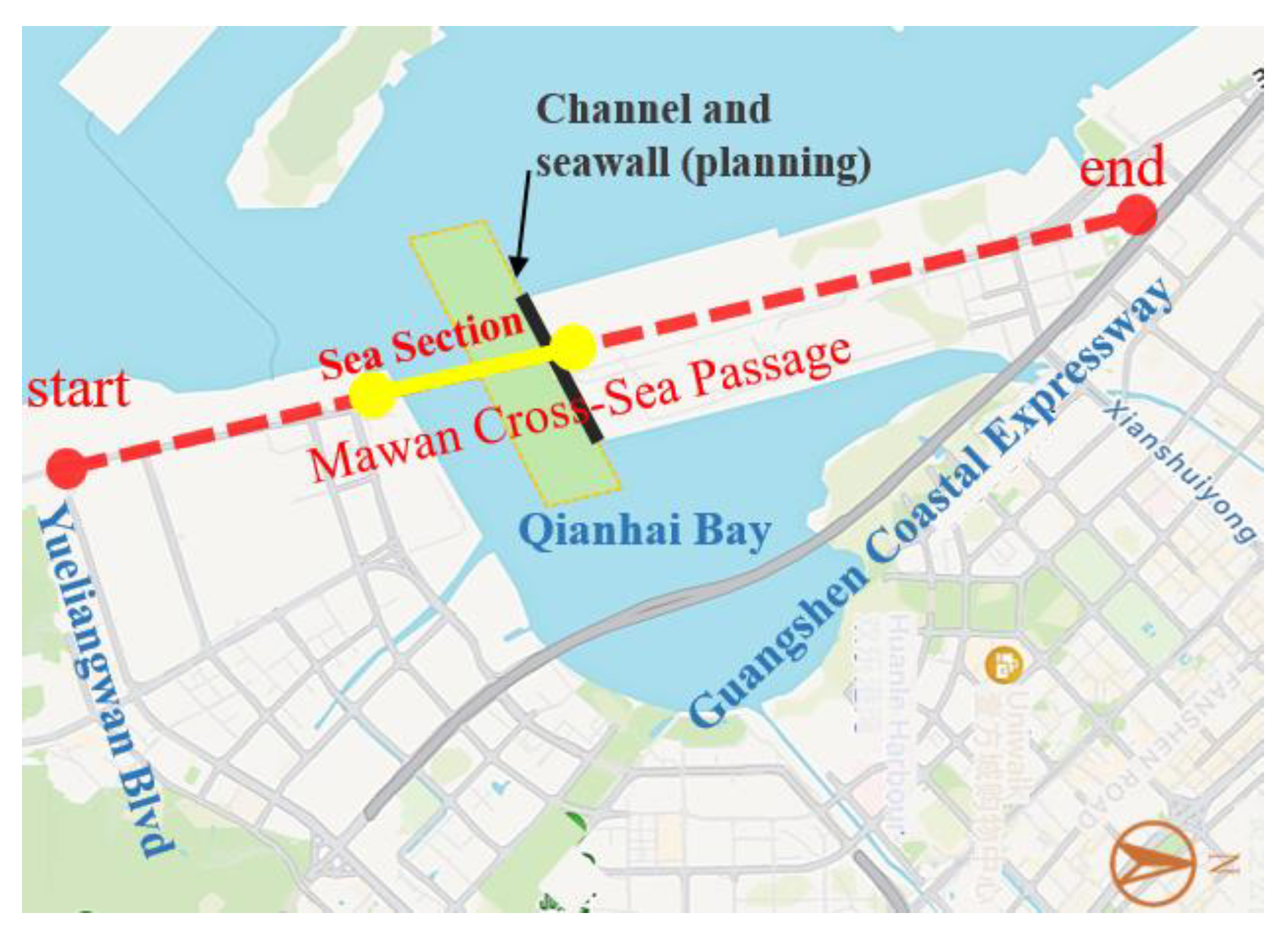


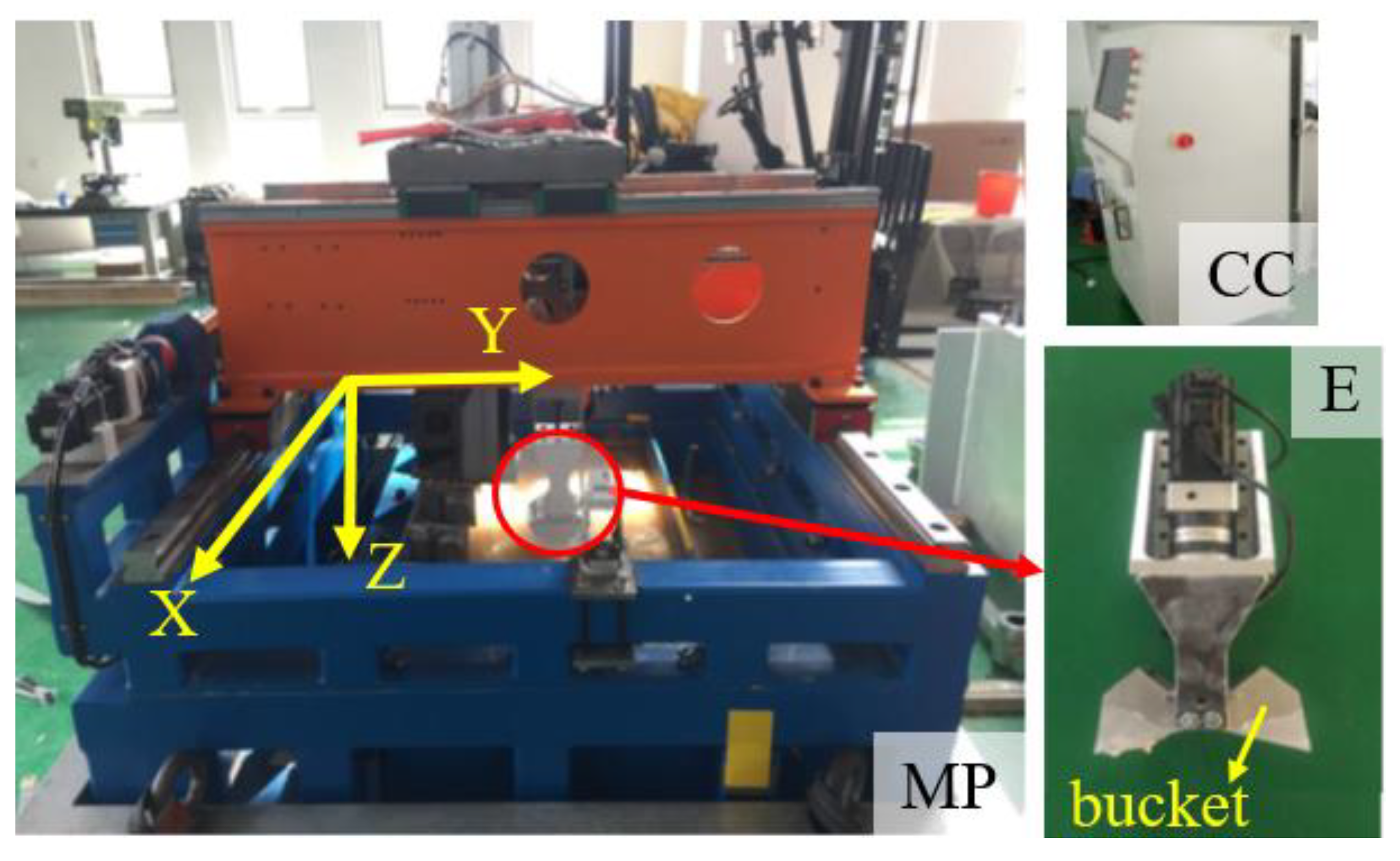


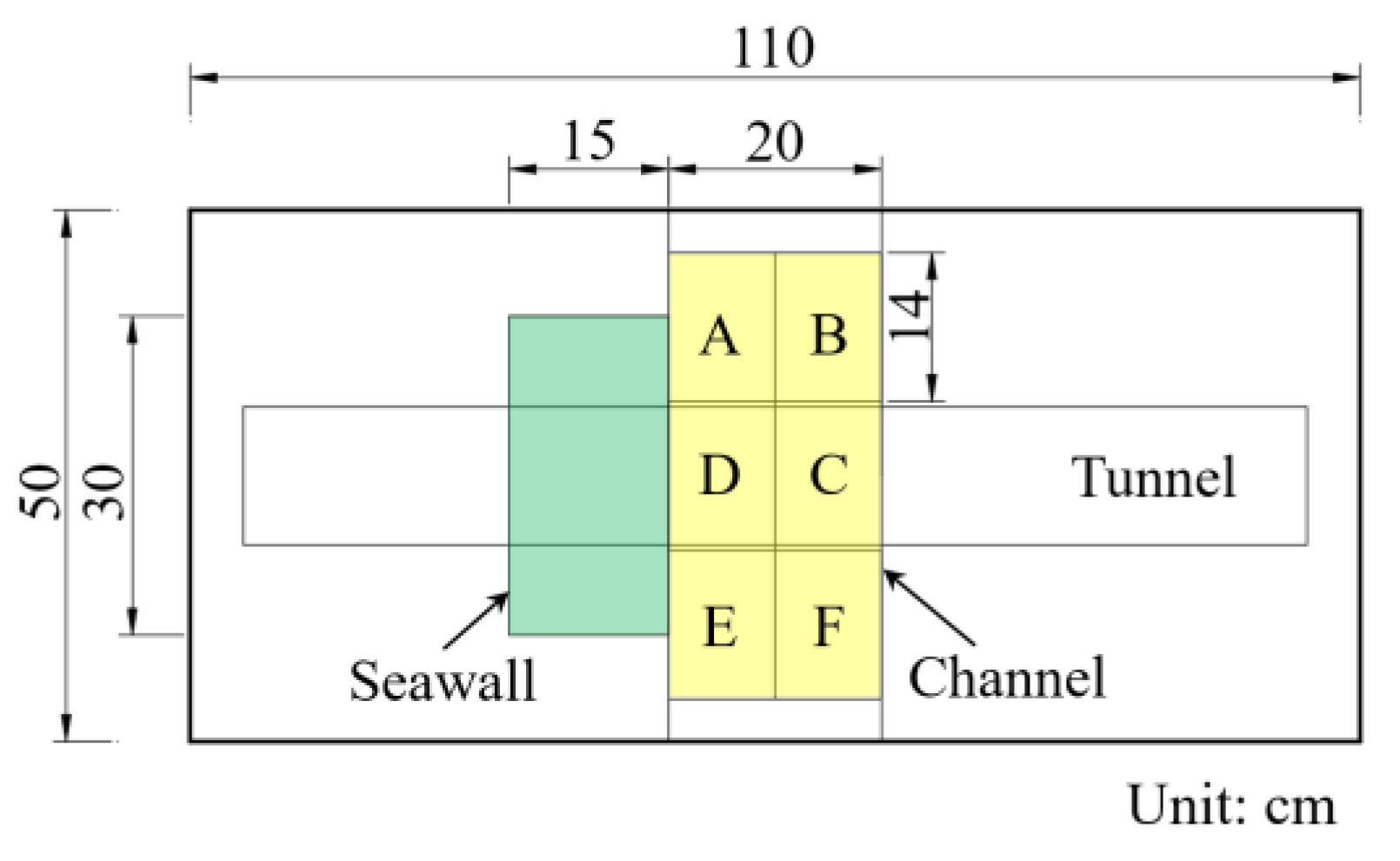
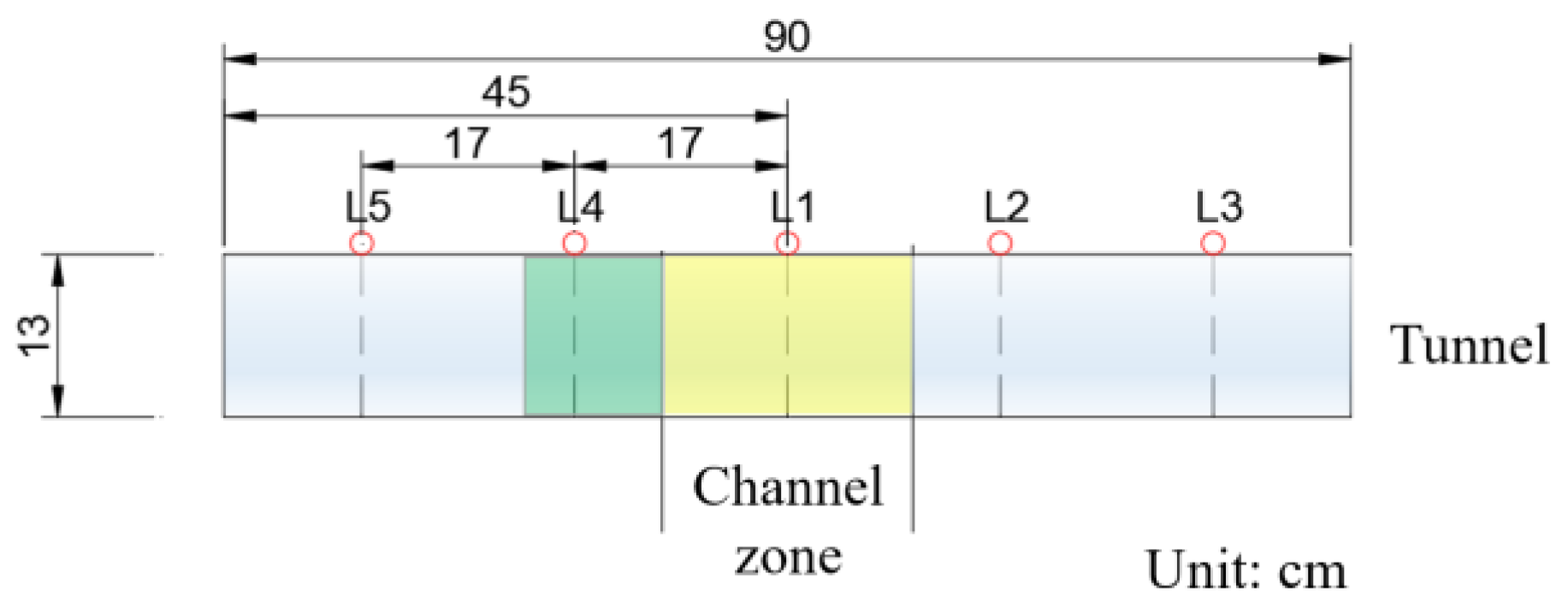

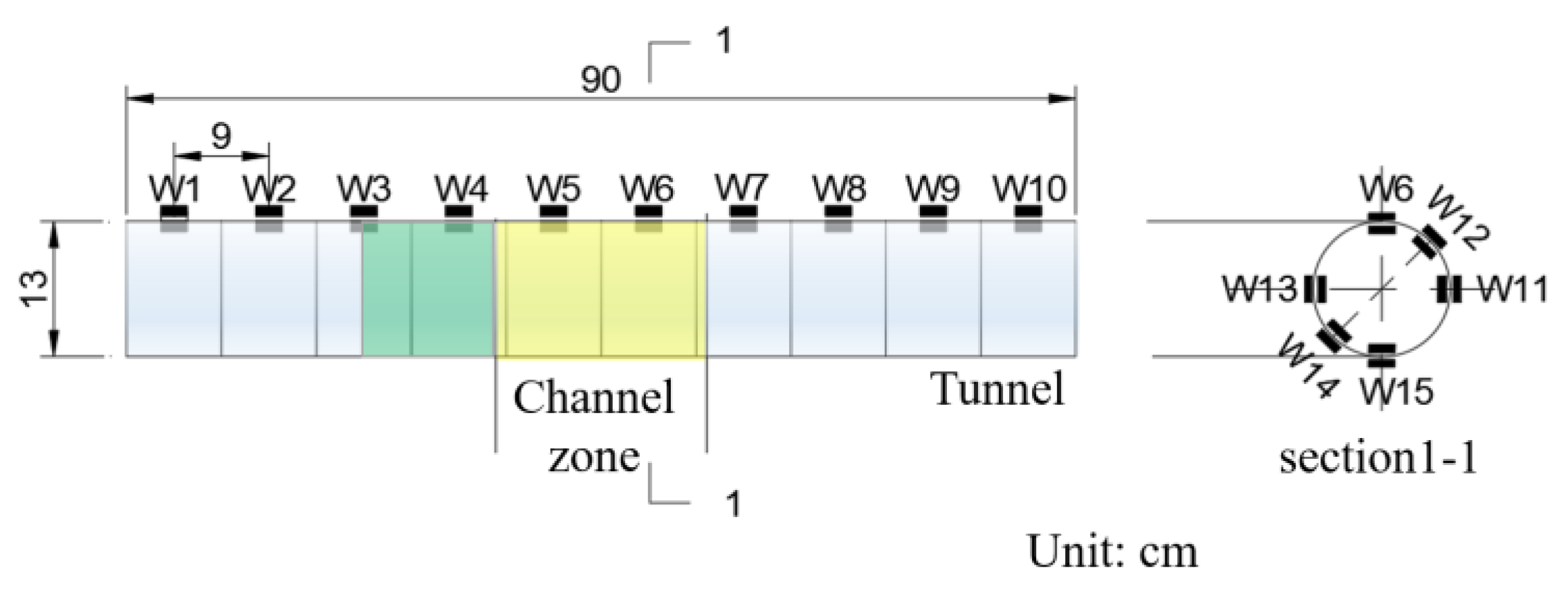
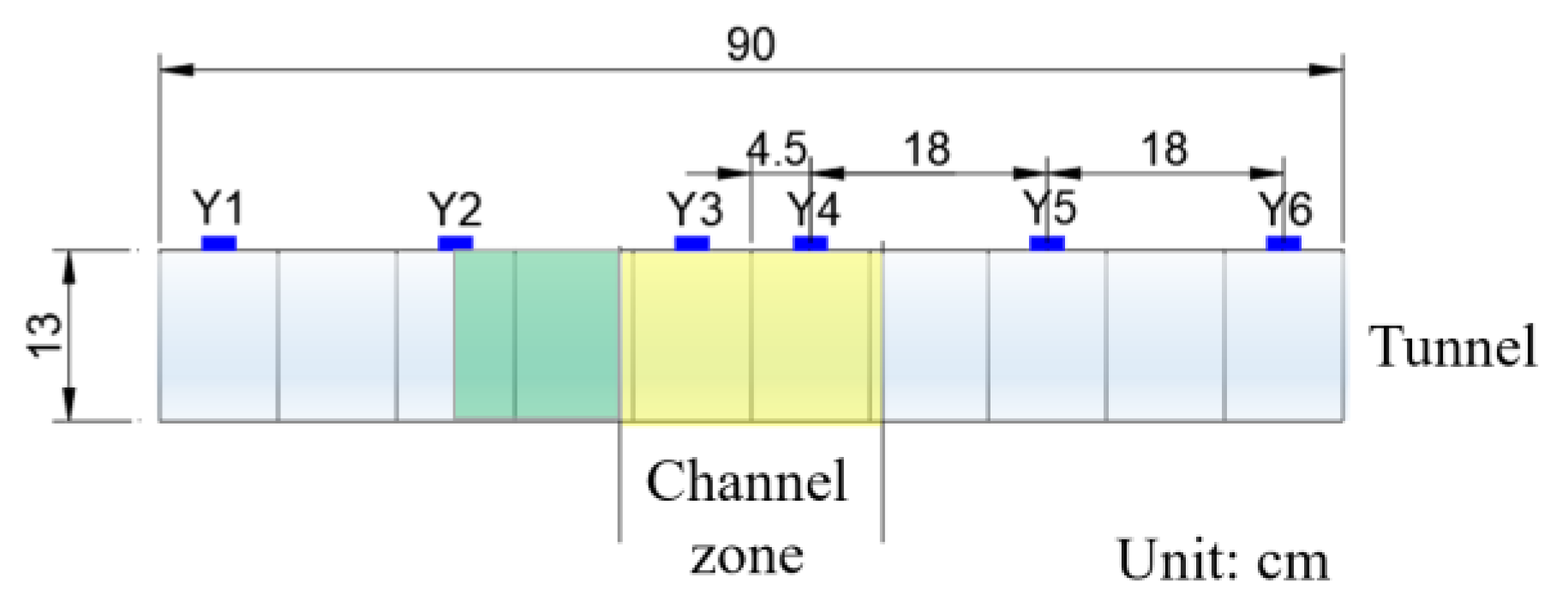

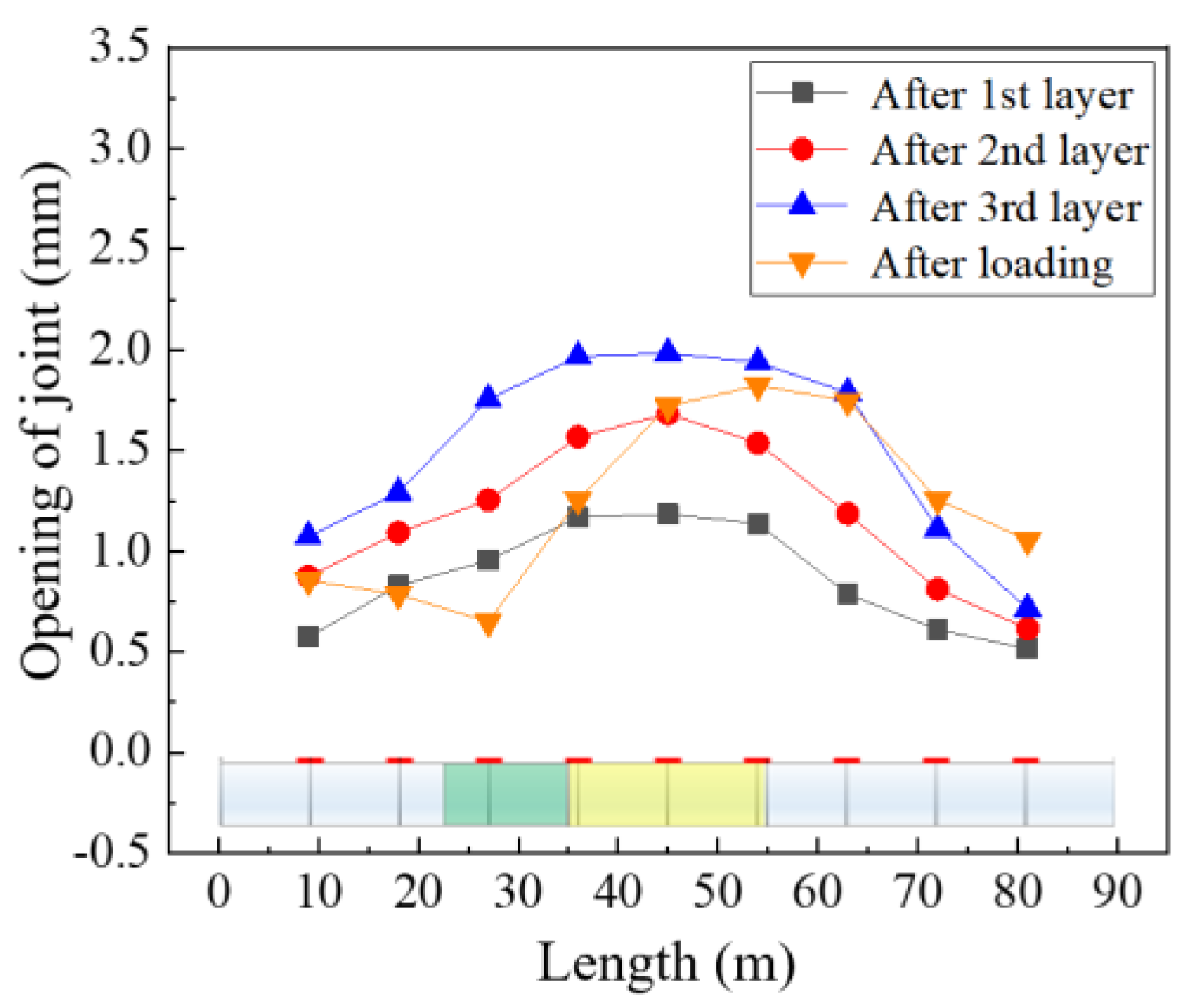
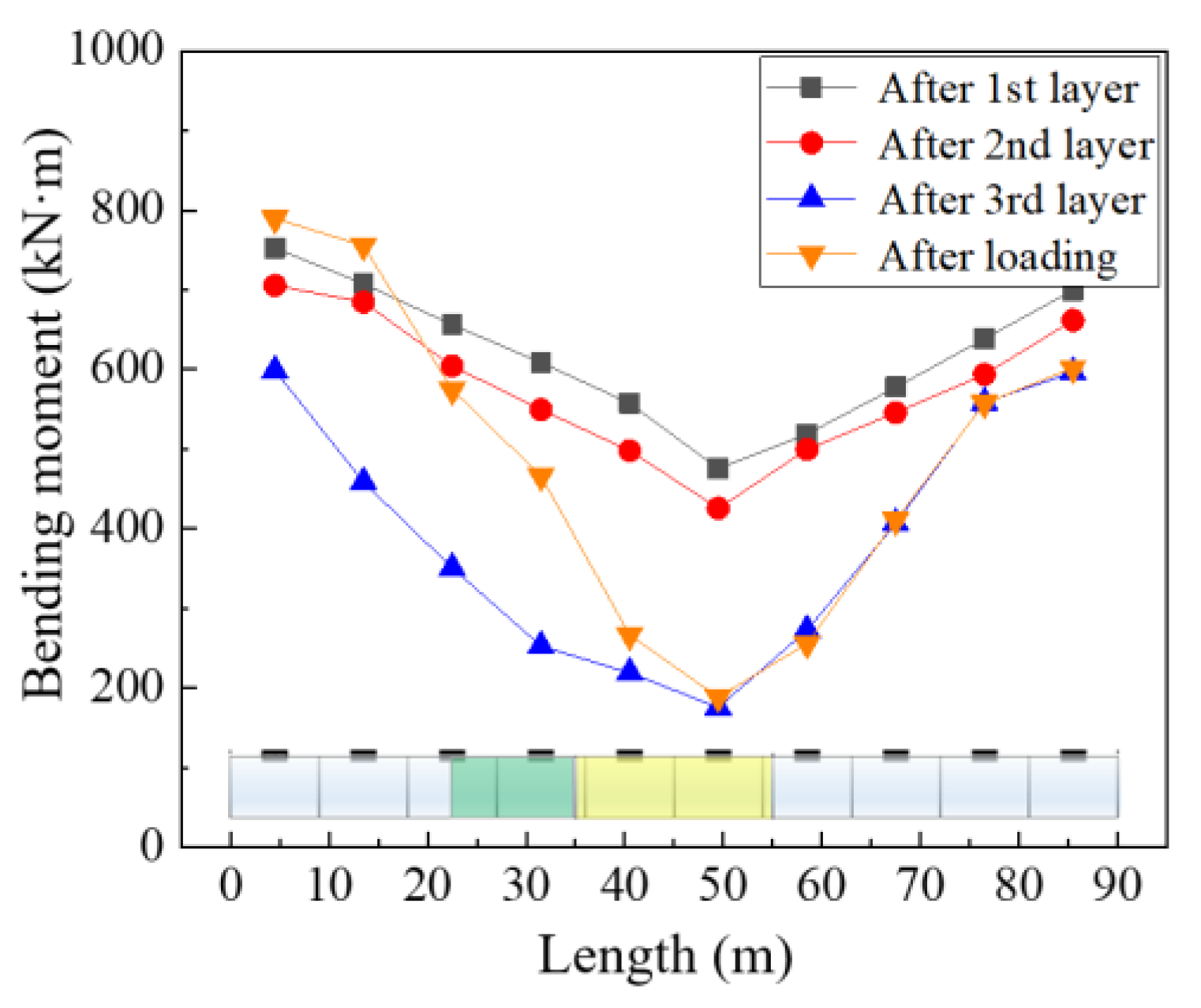

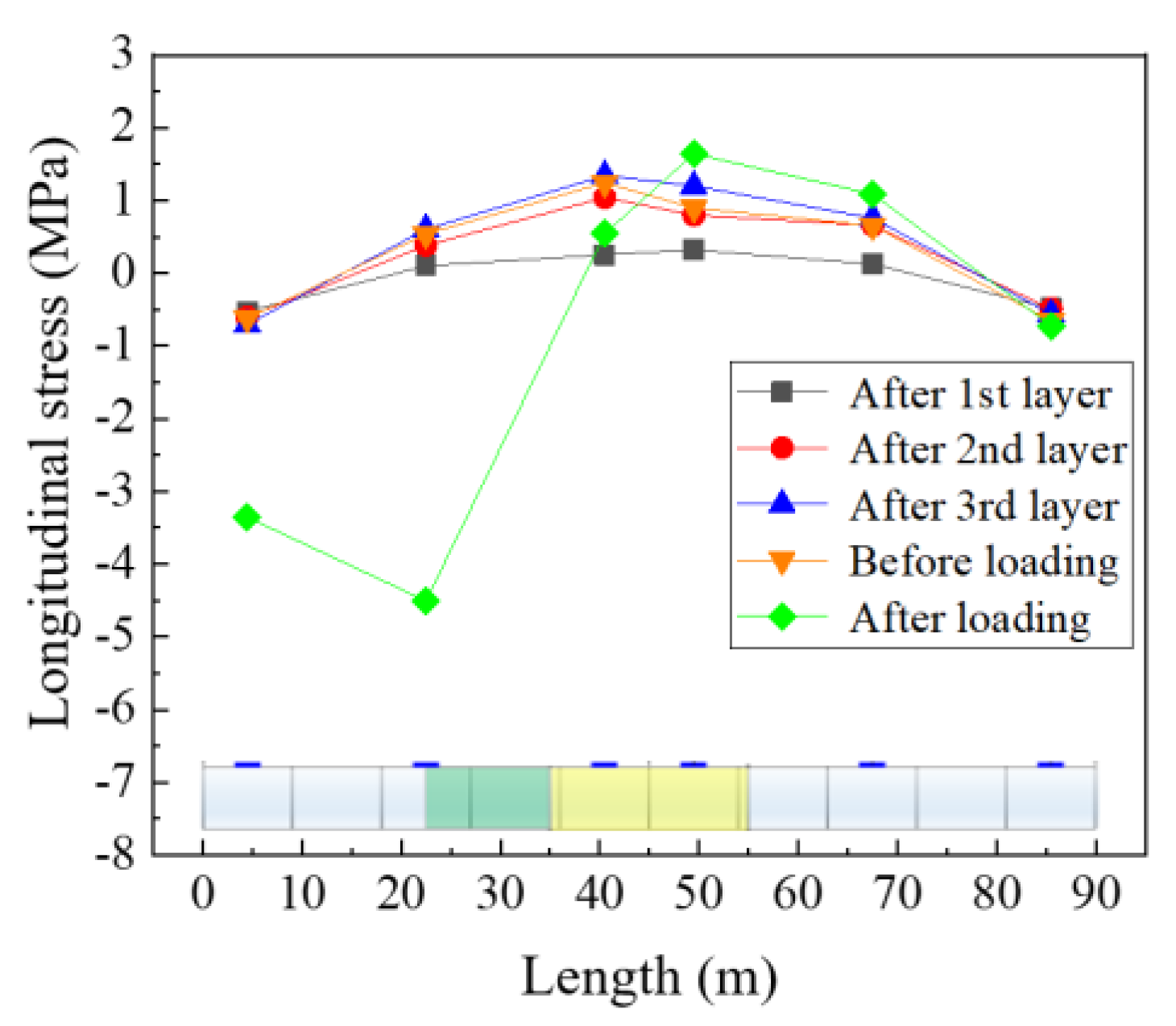
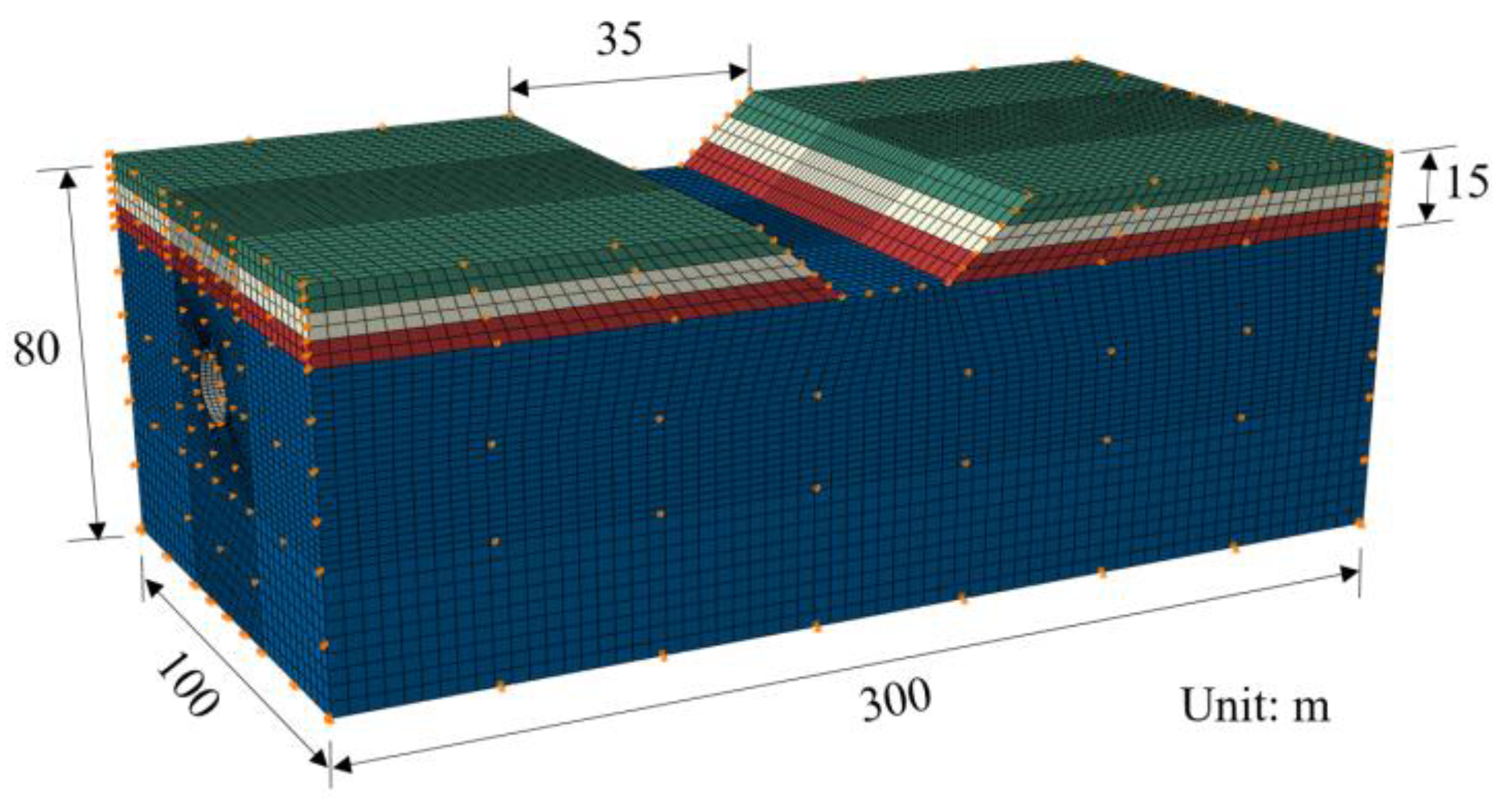
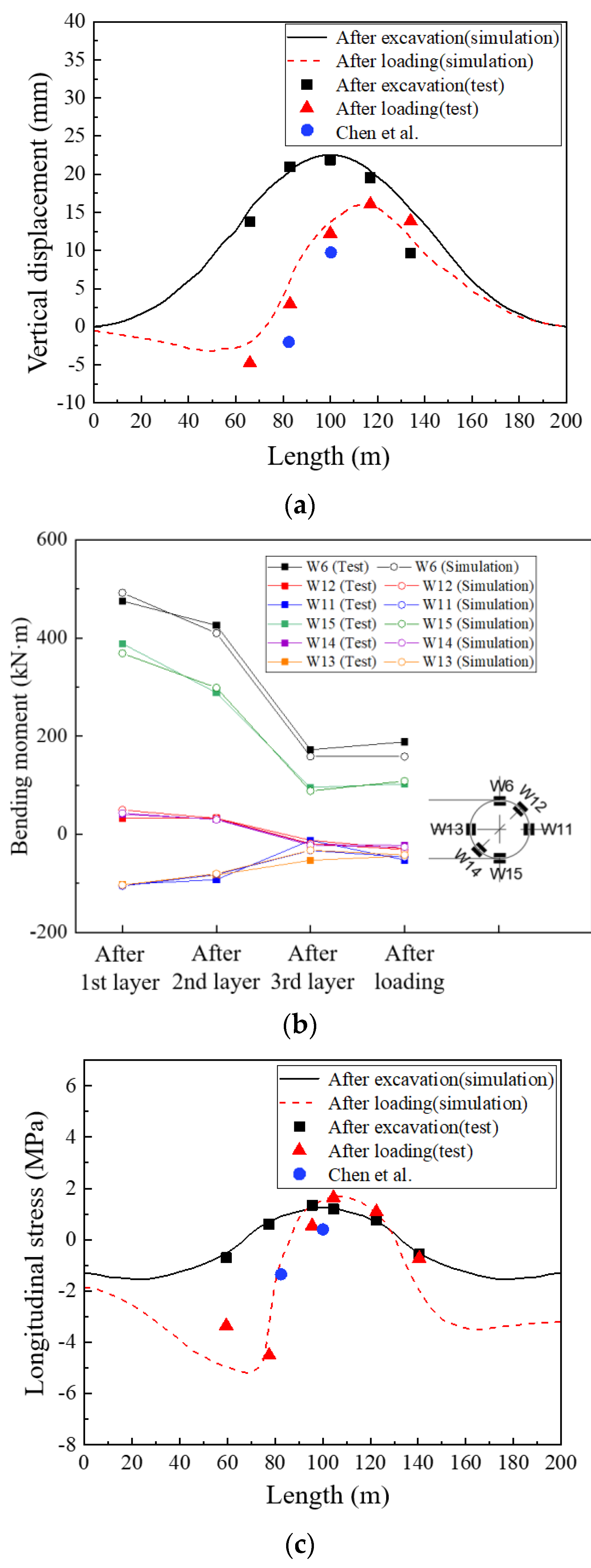
| Physical Parameters | Scaling Factor (Model/Prototype) |
|---|---|
| Length | 1/100 |
| Acceleration | 100 |
| Density | 1 |
| Stress | 1 |
| Strain | 1 |
| Force | 1/1002 |
| Bending moment | 1/1003 |
| Flexural rigidity | 1/1004 |
| Density (kg/m3) | Moisture Content | Internal Frictional Angle (°) | Cohesion (kPa) | Shear Modulus (kPa) | Poisson’s Ratio |
|---|---|---|---|---|---|
| 1780 | 14.1 | 33 | 15 | 8700 | 0.33 |
Disclaimer/Publisher’s Note: The statements, opinions and data contained in all publications are solely those of the individual author(s) and contributor(s) and not of MDPI and/or the editor(s). MDPI and/or the editor(s) disclaim responsibility for any injury to people or property resulting from any ideas, methods, instructions or products referred to in the content. |
© 2023 by the authors. Licensee MDPI, Basel, Switzerland. This article is an open access article distributed under the terms and conditions of the Creative Commons Attribution (CC BY) license (https://creativecommons.org/licenses/by/4.0/).
Share and Cite
Wang, X.; Yuan, D.; Luo, W.; Zhang, S.; Liu, H. Centrifuge Model Tests on the Effects of Navigable Channel Excavation and Seawall Construction on a Subsea Shield Tunnel Below. Symmetry 2023, 15, 1412. https://doi.org/10.3390/sym15071412
Wang X, Yuan D, Luo W, Zhang S, Liu H. Centrifuge Model Tests on the Effects of Navigable Channel Excavation and Seawall Construction on a Subsea Shield Tunnel Below. Symmetry. 2023; 15(7):1412. https://doi.org/10.3390/sym15071412
Chicago/Turabian StyleWang, Xiaoyu, Dajun Yuan, Weiping Luo, Song Zhang, and Huixi Liu. 2023. "Centrifuge Model Tests on the Effects of Navigable Channel Excavation and Seawall Construction on a Subsea Shield Tunnel Below" Symmetry 15, no. 7: 1412. https://doi.org/10.3390/sym15071412





